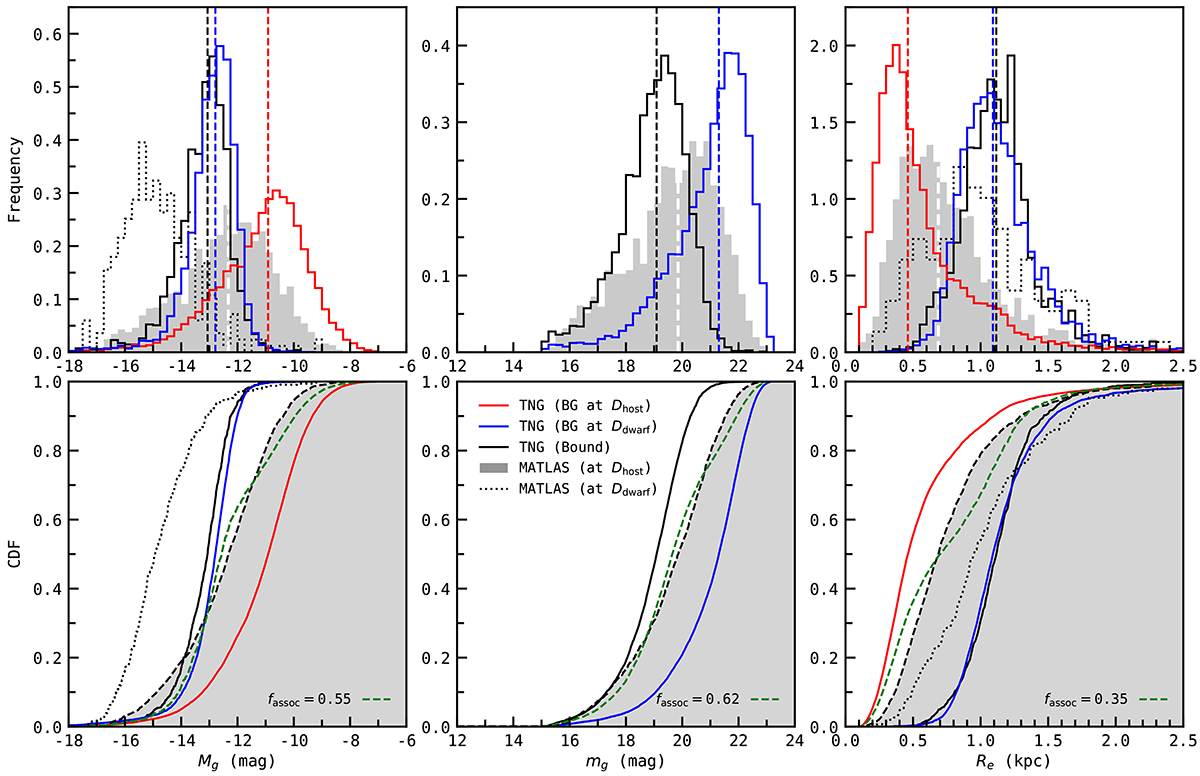Fig. 4.

Download original image
Properties of the MATLAS dwarfs and their simulated TNG analogues. TNG dwarfs bound to their host galaxy are plotted in black, while those unassociated with their supposed host are drawn in blue. MATLAS dwarfs are shown in shaded grey. Absolute magnitude, Mg, and effective radius, Re, require distance estimates to derive, while apparent magnitude, mg, is a purely observational property. For the former two, estimates derived by assuming TNG dwarfs lie at their designated host galaxy’s distance are plotted in red. Of the MATLAS dwarfs, 15% have individual distance estimates. The Mg and Re values calculated using these known distances are drawn as black dotted lines. The distribution of MATLAS dwarfs in Mg, mg, and Re generally lies between the bound and background population in TNG. We also estimate the fraction of MATLAS dwarfs physically associated to their field’s host galaxy, fassoc, by averaging over TNG’s bound and background CDFs (green dashed line) with a ratio that minimizes the corresponding Kolmogorov-Smirnov statistic.
Current usage metrics show cumulative count of Article Views (full-text article views including HTML views, PDF and ePub downloads, according to the available data) and Abstracts Views on Vision4Press platform.
Data correspond to usage on the plateform after 2015. The current usage metrics is available 48-96 hours after online publication and is updated daily on week days.
Initial download of the metrics may take a while.


